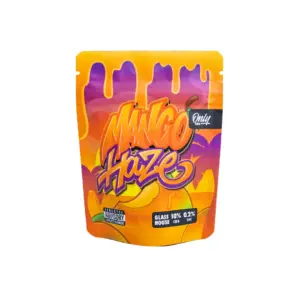CANNABINOIDS AND THE ENDOCANNABIS SYSTEM
Humans produce their own cannabinoids, called endocannabinoids. These endocannabinoids act on or stimulate cannabinoid receptors. Their compounds act similarly to phytocannabinoids, which also bind to receptors. Cannabinoids from plants are called phytocannabinoids.
The endocannabinoid system is composed of cannabinoid receptors, and endocannabinoids interact in the same way as a lock and key. Cannabinoid receptors are cell membrane proteins that act as the lock for endocannabinoids, endogenous lipid compounds produced by the body's various cells. These receptors act like a perfect key that binds to the receptors. This activation produces changes within cells that lead to the final actions of the endocannabinoid system on the body's physiological processes. The endocannabinoid system is involved in a wide variety of physiological processes (e.g., modulation of neurotransmitter release, regulation of pain perception, and cardiovascular, gastrointestinal, and liver functions), which we will explain in more detail in this article.
The name "endocannabinoid system" refers to the fact that this endogenous system is the one affected by the intake of phytocannabinoids, which act as a false key capable of fitting into the lock of the cannabinoid receptors, producing a different effect than that of the perfect key, represented by the endocannabinoids produced by the body.

CANNABINOID RECEPTORS
The two main receptors that make up the endocannabinoid system are the cannabinoid receptors CB-1 and CB-2. Recently, it has also been accepted that the orphan receptor GPR55 can be considered the third receptor with cannabinoid activity. All of these receptors are transmembrane proteins, capable of transmitting an extracellular signal into the cell.
CB-1 receptors are the most abundant metabotropic receptors in the brain, and their distribution has been extensively characterized in humans. CB-1 receptors are highly expressed in the hippocampus, basal ganglia, cortex, and cerebellum. These receptors are less expressed in the amygdala, hypothalamus, nucleus accumbens, thalamus, periapeduncular gray matter, and spinal cord, as well as in other areas of the brain, primarily the telencephalon and diencephalon. CB-1 receptors are also expressed in several peripheral organs; therefore, they are present in adipocytes, liver, lungs, smooth muscle, gastrointestinal tract, pancreatic ß cells, vascular endothelium, reproductive organs, the immune system, peripheral sensory nerves, and sympathetic nerves.
It plays an essential role in our nervous system and regulates multiple physiological processes. This includes adjusting our response to pain, appetite, digestion, sleep, mood, inflammation, and memory.
The ECS also influences seizure thresholds (e.g., in epilepsy), coordination, and other processes such as the immune system, cardiac function, sensory integration (touch, balance, spatial sense), fertility, bone physiology, the central stress response system (CSRS), neural development, and eye pressure.

SOME CONSIDERATIONS ABOUT CANNABIS
The effects of cannabis peak between 30 minutes and an hour, but can last for two to three hours. It produces an initial feeling of euphoria and well-being, followed by sedation and depression with relaxation, loss of concentration, lethargy, and drowsiness.
It can affect visual and auditory perception, as well as the subjective perception of time, which seems to pass more slowly. Temporary alterations in visual acuity and color discrimination may also occur.
Short-term effects of marijuana use include problems with memory and learning, distorted perception, difficulty thinking and problem-solving, loss of coordination and increased heart rate, anxiety, and panic attacks.

















